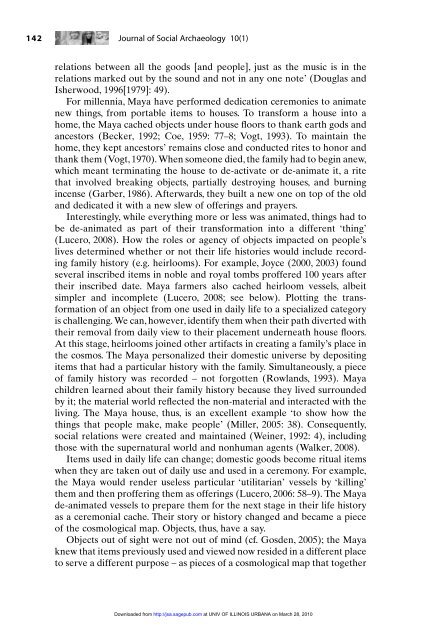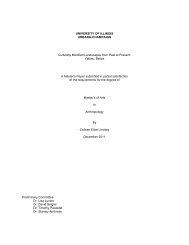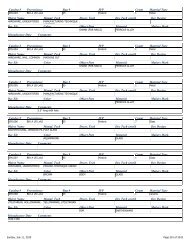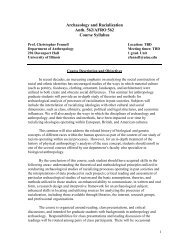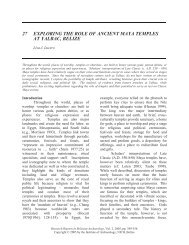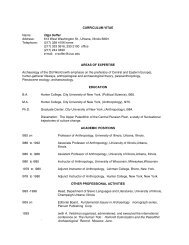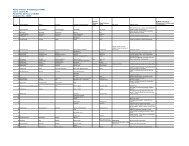Materialized Cosmology among Ancient Maya Commoners.
Materialized Cosmology among Ancient Maya Commoners.
Materialized Cosmology among Ancient Maya Commoners.
Create successful ePaper yourself
Turn your PDF publications into a flip-book with our unique Google optimized e-Paper software.
142 Journal of Social Archaeology 10(1)relations between all the goods [and people], just as the music is in therelations marked out by the sound and not in any one note’ (Douglas andIsherwood, 1996[1979]: 49).For millennia, <strong>Maya</strong> have performed dedication ceremonies to animatenew things, from portable items to houses. To transform a house into ahome, the <strong>Maya</strong> cached objects under house floors to thank earth gods andancestors (Becker, 1992; Coe, 1959: 77–8; Vogt, 1993). To maintain thehome, they kept ancestors’ remains close and conducted rites to honor andthank them (Vogt, 1970). When someone died, the family had to begin anew,which meant terminating the house to de-activate or de-animate it, a ritethat involved breaking objects, partially destroying houses, and burningincense (Garber, 1986). Afterwards, they built a new one on top of the oldand dedicated it with a new slew of offerings and prayers.Interestingly, while everything more or less was animated, things had tobe de-animated as part of their transformation into a different ‘thing’(Lucero, 2008). How the roles or agency of objects impacted on people’slives determined whether or not their life histories would include recordingfamily history (e.g. heirlooms). For example, Joyce (2000, 2003) foundseveral inscribed items in noble and royal tombs proffered 100 years aftertheir inscribed date. <strong>Maya</strong> farmers also cached heirloom vessels, albeitsimpler and incomplete (Lucero, 2008; see below). Plotting the transformationof an object from one used in daily life to a specialized categoryis challenging. We can, however, identify them when their path diverted withtheir removal from daily view to their placement underneath house floors.At this stage, heirlooms joined other artifacts in creating a family’s place inthe cosmos. The <strong>Maya</strong> personalized their domestic universe by depositingitems that had a particular history with the family. Simultaneously, a pieceof family history was recorded – not forgotten (Rowlands, 1993). <strong>Maya</strong>children learned about their family history because they lived surroundedby it; the material world reflected the non-material and interacted with theliving. The <strong>Maya</strong> house, thus, is an excellent example ‘to show how thethings that people make, make people’ (Miller, 2005: 38). Consequently,social relations were created and maintained (Weiner, 1992: 4), includingthose with the supernatural world and nonhuman agents (Walker, 2008).Items used in daily life can change; domestic goods become ritual itemswhen they are taken out of daily use and used in a ceremony. For example,the <strong>Maya</strong> would render useless particular ‘utilitarian’ vessels by ‘killing’them and then proffering them as offerings (Lucero, 2006: 58–9). The <strong>Maya</strong>de-animated vessels to prepare them for the next stage in their life historyas a ceremonial cache. Their story or history changed and became a pieceof the cosmological map. Objects, thus, have a say.Objects out of sight were not out of mind (cf. Gosden, 2005); the <strong>Maya</strong>knew that items previously used and viewed now resided in a different placeto serve a different purpose – as pieces of a cosmological map that togetherDownloaded from http://jsa.sagepub.com at UNIV OF ILLINOIS URBANA on March 28, 2010


